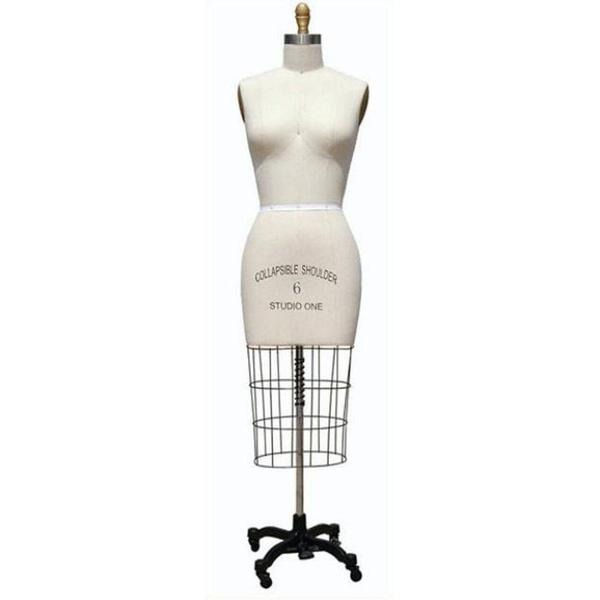HOW TO TAKE MEASUREMENT ON DRESS FORM FOR DRAFTING FRONT WAIST SLOPER?
- Bhagchand Rajak

- Apr 9, 2021
- 3 min read
Updated: Apr 12, 2021
Slopers differ from one garment manufacturer to another, and often within the manufacturer. The differences occur because all firms do not use the same measurements for given size, and firms which do adhere to the same measurements for a given size differ because of the sculpturing of the form within the measurements . However, the principles for developing basic slopers are not affected by the differences found in the measurements.
There are two methods used to develop basic slopers :
Drafting slopers on paper from standard model form or body measurements.
Transferring a draped muslin sloper on to paper .
In order to achieve balanced and well fitting slopers, it is on the utmost importance to be accurate in:
Taking measurements for worksheet:
Squaring and trueing lines and crossing intersections;
shaping and blending curve lines.
It is also important to have all the required measurements listed on a separate sheet of paper to avoid confusion while drafting slopers. Copy or take measurements in the same sequential order as listed on the measurement chart to simplify the directions for drafting.
Whicever method for drafting slopers in used, all slopers must be tested in muslin for accuracy balanced seamlines, and fit. Corrections made on the muslin must then be transferred to the sloper.
Throughout this text slopers are developed either on the fold of the paper or over accurately drawn rectangle and square lines.
Original slopers which have been completed tested should never be altered to develop a specific garment . Original slopers are the foundation for the developing other slopers and designs. It is recommended that a copy be made of the sloper needed to make the changes necessary for garment or design being developed.
NOTE:- Seams, arm plate, and waistline on dress form must be checked and corrected if needed before taking measurements. Refer How to Analyze & correct Dress Form Seam lines Before Taking Measurements. 2. Refer to How to Take Body Measurements for Body Measurements.

FRONT LENGTH
Measure from neckline and shoulder seam intersection down over apex to center of waistline tape.
APEX
Measure from apex to center front seam at bust line . (Princess seam of generally falls over center of bust. )
DEPTH OF FRONT NECK/WIDTH OF FRONT NECK
Use designers neckline curve to find position at center front and shoulder on dress form.
WIDTH OF BUST
Measure from the established armhole dot down from 1" (2.54cm) for armhole ease. Dot Measure from new underarm seam dot over apex to center front seam of figure plus 1/2" (1.27 cm) for bust and underarm ease.

UNDERARM SEAM
Measure from the established armhole do0t down to center of waistline tape.
FRONT WAISTLINE
Measure from underarm seam over center of tape to center front seam of figure plus 1/4"(0.64cm) for ease.
WAISTLINE TO END OF SHOULDER
Figure- A: To establish shoulder point, measure 1/4'' (0.64cm) in from ridge of armhole and mark with a pencil dot or a pin. Measure from center of waistline tape at underarm seam up over armplate to 1/4'' (0.64cm) dot plus 3/4''(0.95cm)
Figure B: To establish shoulder point on body, measure from center of waistline tape at underarm seam around arm up to marking tape at end of shoulder.
SHOULDER LENGTH
Measure from neckline and shoulder seam intersection to 1/4''(0.64cm) dot minus 1/8'' (0.32cm)to compensate for stretch of shoulder after sloper is transferred into muslin. This also allow for blending shoulder seam at armhole section.



Comments